 Loading asset information.
Loading asset information.
Documentation
Make/Model: Dewalt DW746
Location: The Workshop
This is from the old table saw and can be adapted to the new table saw
Table Saw Basic Rules
- Only use the table saw if you are properly trained to do so. Otherwise, ask for assistance or training.
- Wear eye protection.
- No freehand cuts! Use the fence for rip cuts. Use the miter gauge or crosscut sled for crosscuts. Otherwise, you risk kickback. Kickback often involves more than just your workpiece flying in your face; it can easily involve your fingers doing the same: video example (high clench factor but no gore).
- Ensure the dust collector is empty. What to do when someone else leaves dust behind.
- Run the dust collector.
- Use the blade guard unless the cut requires you to remove it (e.g., dado or another non-through cut, use of crosscut sled or other sliding jigs).
- If you are not using the sliding feed table, make sure it is locked down.
- Do not wear loose clothes, hair, or jewelry that can get caught.
- Only cut wood or wood-based sheet goods (plywood, MDF, particleboard, hardboard, etc.).
- RECLAIMED MATERIAL MUST BE SCANNED FIRST. We have a metal detector. Use it. Members will replace the blade if they cut metal.
- If you want to cut something else, check with workshop leadership. ”Some” plastics and ”some” aluminum can be cut with prior approval, but these require a different blade and different dust collection. In nearly all cases, we have a better tool for the job. Please ask; we’ve spent a lot of money to fix damage to various tools from cutting the wrong materials.
- Use the panel saw or circular saw to break down sheet goods first. Cut a little oversize and use the table saw to cut to size. To reduce tear-out, tape over the cut line on the side facing you with masking tape or score each side of the kerf with a knife.
- Take your dust with you when you leave.
Tips
For more tips:
- watch this video on table saw safety
- read the ACE Table Saw Certification Course materials below
- watch this video on table saw blade types
- See this post about securing wood on the table saw and using feather boards and push sticks.
ACE Table Saw Certification Course
This is a summary of what is taught in the ACE Certification course for the tablesaw.
What Does a Table Saw Do?
A table saw can cut a straight line in wood. It can cut all the way through or partially through, and it can cut at an angle or perpendicular to the wood. It makes a furniture-quality straight line and a smooth edge, unlike a band saw.
Table Saw Adjustments
The blade can be lowered or raised to various heights, and it can be inclined to up to 45 degrees in one direction. It has a pre-set vertical position that when adjusted correctly means you do not have to test whether the blade is vertical with a test cut. The fence can be adjusted and secured to guide your work through the blade in a straight line. The blade height above the table should be set so that the teeth fully clear the wood if you intend to cut all the way through; otherwise it should be set to the depth of the cut you require.
Table Saw Accessories
The miter gauge can be placed in a groove on the table on either side of the blade to make a right-angle or other angled cuts.
The fence controls how far from the edge of the wood the saw will cut. The fence is only for long cuts, called ”ripping”. A feather board keeps pressure against the wood to hold it next to the fence. A hold-down can attach to the fence and press the work into the table without interfering with it sliding forward.
There are different blades for different purposes. It isn’t difficult to change blades.
Fine-quality cuts are made with blades that have the most teeth. The teeth are often flat on top. These cuts proceed slower but have brilliantly sharp results.
Rougher, faster cuts are made using blades with larger teeth. The tops of these teeth are often alternating points.
Table saw blades turn the width of the teeth into sawdust. This width is called the kerf. There are thinner-kerf blades, but you must feed stock to them slower than normal blades.
A dado blade makes a kerf just wide enough for another piece of wood to rest securely. With a dado blade, you do not cut all the way through the wood; you leave a slot like a groove for the miter gauge.
Changing the Blade
- Unplug the table saw and close the dust collector
- Remove the throat plate by lifting it from the front edge, using a scrap of wood or a knife blade
- Raise the blade so you have comfortable access to the nut
- Loosen the nut using the blade wrench that is attached by a string to the table saw. This is a right-hand nut that loosens counter-clockwise, as if you were loosening any normal nut
- Remove the nut with your fingers
- Remove the outer blade tensioner disc and then the blade
Do not remove the second blade tensioner disc
- Place the blade in a safe location and mount the blade you want to use on the table saw arbor bolt (where the previous blade was)
- Place the blade tensioner disc on over the bolt and push it snugly against the blade
- Thread the nut back onto the arbor bolt (clockwise)
- When it is finger-tight, use the wrench to tighten it further — use normal hand strength on the wrench to tighten it
Common Techniques
The table saw is versatile, but most cuts fall into one of these categories:
Rip
A rip is a cut parallel to the long edge of your stock.
- While the saw is off, use the fence to set where the blade will meet the wood
- Lock the fence into position
- Set up a hold-down if you have one
- Grab a push stick if appropriate and get into position for the cut to make sure it makes sense and is safe
- Turn on the saw and let it come up to speed
- Open the dust collector
- Place your work away from the blade but adjacent to the fence
- Slowly advance your work into the saw blade while standing in a fail-safe location
- Move your stock through the blade until it has completely cleared the blade
- Turn off the saw and wait for it to come to a halt
- Remove both pieces of your stock
- Close the dust collector
Cross-Cut
A cross-cut is a cut across (perpendicular to) the long edge of your stock. To make a cross-cut, you’ll use the miter gauge. It can be used on either side of the blade to accommodate left- and right-handed people.
- Move the fence completely out of the way
- While the saw is off, use the miter gauge to set where the blade will meet the wood
- Pinch or hold the wood firmly against the miter gauge so it doesn’t move
- Turn on the saw and let it come up to speed
- Open the dust collector
- Slowly advance your work into the saw blade while standing in a fail-safe location, steadily holding the stock against the miter gauge
- Move your stock through the blade until it has completely cleared the blade
- Turn off the saw and wait for it to come to a halt
- Remove both pieces of your stock
- Close the dust collector
DO NOT REMOVE THE CUT-OFF PIECE UNTIL THE BLADE HAS COME TO A HALT!
NEVER PUT YOUR FINGERS ON THE STOCK BETWEEN THE MITER GAUGE AND THE BLADE!
Dado
A dado cut is a cut that doesn’t fully penetrate the stock. For example, you can cut a slot near the edge of a panel for another panel to slide into. A dado cut requires the use of a dado blade, which typically has 3 or 4 individual blades that must be positioned and secured carefully. Dado sets sometimes have contoured faces to allow you to use the table saw as a shaper.
A dado cut removes a lot of wood, so you must feed stock more slowly. Dado cuts are also more prone to kickback, so it is a very good idea to use hold-downs when making a dado rip cut. It is also possible to make a dado crosscut using the miter gauge, but you must be sure to hold the work securely.
Set the depth of the dado using the blade depth adjuster. Dado blades are generally much smaller than a regular saw blade, so you will have to raise the dado quite a bit for it to even reach above the level of the table.
A dado requires the use of a different throat plate – you cannot use the throat plate used for normal blades. Make one (see below) if there isn’t a suitable one available.
You will have to remove the blade guard/riving knife to make this cut (they are a single unit). Before you do that, rip a piece of wood you can use as a measuring device to put the riving knife back in the correct position. If the riving knife isn’t adjusted properly it is dangerous for people to use the tablesaw. Do not remove the riving knife unless you are willing and able to put it back correctly. The wrench you need is in a small wooden box labeled “the one that fits the tablesaw”. That box is on the wall of french cleats behind the tablesaw, below the other wrenches. You don’t need to remove the nuts completely, just loosen them enough for the riving knife to be removed. Make a test cut after you have reattached the blade guard/riving knife to make sure it has been properly reattached.
Follow the steps for a cross-cut or rip cut above, but move the wood more slowly than you would for a normal cut. The table saw’s sound will tell you if it is bogging down and you need to go slower.
Making a Throat Plate for a Dado Cut
If there isn’t a throat plate the right size to accommodate your dado cut, you will have to make one from thin MDF. This isn’t that hard: trace the outline of the existing throat plate onto an MDF scrap and cut it out on the bandsaw. Hold it in position with the fence pinning one edge and a push stick on the other. Standing in a failsafe place turn on the saw and slowly raise the dado blade until it cuts through the MDF. Keep raising the blade until it extends a bit more than what you intend to use for this cut. Don’t cut more than that; it is best when the clearance is small. Your throat plate is now ready for use.
If you ever need to make a deeper dado cut than the existing throat plate would accommodate, you can carry out this procedure on the existing plate.
If your throat plate is too thin, you can glue some flat pieces of thin wood around its edges to raise it up. Never use less than 1/8″ masonite or MDF for a throat plate.
Complex Cuts
Here are some examples of complex cuts you can make on a table saw:
- Box joints
- Tenon Joints
- Compound miter joints
You will need to make a jig and use special techniques for these kinds of cuts.
Jigs are fun to make and are re-usable, sharable resources.
- Sleds can be made on a sheet of 1/8″ masonite or 1/4″ MDF
- You can attach blocks of wood to naturally keep your stock in the correct orientation
- You can use small clamps to hold your stock, or your hands if the jig keeps them in a safe position
- You can use good-quality sandpaper on a sled or other parts of your jig to reduce the chance of stock slipping
These complex cuts are beyond the scope of certification, but the jigs you make should all comply with these principles:
- Jigs should enhance overall safety
- Jigs should improve the repeatability of cuts
- Jigs should never damage the tool or its accessories
- Jigs should not require you to stand in a dangerous location
- Jigs should not damage your work
- Jigs should be solid enough to not fly apart if something goes wrong; parts should be screwed and/or glued securely
Dust Collection
The dust collector is attached underneath or to the side of the saw blade to collect sawdust. Open the slider to allow it to suck in dust. The dust collector should be turned on if it is not already on.
You will often spend far more time setting up a cut than it actually takes to make it. Close the slider while setting up your cut so that other workshop users will have better suction at their devices, but remember to open it before you make your cut.
Take all your sawdust home with you. What to do if a previous user left dust in the cyclone.
Table Saw Safety
What can possibly go wrong with a table saw? A lot. This is arguably one of the most dangerous tools in the workshop. The risks fall into a couple of categories:
- Kickback
- Cutting yourself
Table saws are very loud and you will have to wear hearing protection as well as eye protection.
Kickback
Kickback is when the work is thrown back from the blade. If you are standing in front of the blade, the work will fly toward you at up to 100 mph. You can do some things to reduce the chance of kickback.
- Your first line of defense is to stay clear of the path of wood being thrown by the spinning blade.
- Depending on the size of your work, you may not be able to stand out of the way of it should it kickback. Standing on one side of the table saw can be much safer than standing behind it in line with the blade.
- You can only use the fence when the work is longer (in the direction of the cut) than it is wide.
- Short stock cannot be safely worked on a table saw using the fence, period. Don’t do it. Use the miter gauge instead and keep the fence out of the way.
- Use a ”hold-down” when possible and practical.
- Don’t use dull blades.
- Use an ”out-table” for long stock, or a bench if it is at the right height.
- Use the fence or a miter gauge or a sled, but ”’ never cut freehand on a table saw”’, ever.
Cutting Yourself
This is the nightmare scenario people imagine in workshops, but the table saw isn’t the most dangerous tool in the shop; the jointer is. At least a table saw leaves something that can possibly be reattached. You are much more likely to be hurt by kickback, but there are some important things you must do to avoid cutting yourself.
- Never put your hand in line with the blade while pushing work toward it.
- Use a push stick if your hand would be anywhere near the blade.
- Always wait for the blade to come to a complete stop before making any adjustments.
- Use the blade guard and riving knife if you can.
If you cut off a finger, ”’put it in a plastic bag with milk or cold water, but not ice”’.
Get yourself and the bag to a hospital immediately.
Do not drive yourself because you could go into shock at any moment and cause an accident.
Safety Features
There is a blade guard/riving knife over the blade. The riving knife holds the kerf open as the wood leaves the back of the blade so it doesn’t pinch the blade (which can damage your work and lead to kickback). The blade guard covers the blade until your work slides under it and lifts it up, where it continues to cover the blade.
Note: Your hand can easily slide under the blade guard just like your work can. It protects from the top, not the front.
Failsafe Hand Positioning
Failsafe hand positioning is keeping your hands where they would not be injured should the unexpected occur.
One hand should be on the miter gauge or the work, but at least six inches from the blade and always to the side of the blade. If a miter gauge is used, the other hand simply needs to be out of the way. If the fence is used, the other hand holds a push stick to push the work into the blade.
Failsafe Stock Handling
Failsafe stock handling is how you hold and move your work (aka stock) throughout the cut.
- Never cut freehand
- Use a fence for rips only (long, straight cuts)
- Use a miter gauge or sled for cross-cuts
- Use a jig to secure stock for a complex cut
- Use outboard tables or rollers or a bench to receive long stock as it comes off the table saw
“The stock should be completely stable when the cut is finished.”
When the cut is finished, the saw table itself—in combination with any outboard tables or rollers—should support the stock stably. No part of your work should just “fall off” after a cut. All parts (the part you intend to keep and the part you just cut off) must sit stably and do nothing while the saw powers down and you stand in a failsafe place.
Never work ”used materials” unless you have checked them thoroughly for metal (nails, screws, tacks, etc.) using the metal detector in the workshop.
‘”Go slow — speed reduces cut quality and safety.”
The table saw will slow a little bit when you cut, but it should never bog down. Listen to every tool you use to learn what its “happy place” sound is like. Push slower if it drifts out of its happy place.
Default Configuration
When you are done with the table saw:
- The tool should be unplugged
- Close the dust collector slider
- The blade should be returned to a vertical position and lowered beneath the surface of the table
- Your work should be removed
- Any remaining sawdust should also be removed.
Protecting the Table Saw
- Keep the metal table dry and all exterior parts of the saw dry and clean
- Only cut wood with this tool; cutting metal can start a fire because of the inevitable sawdust inside the tool
- Allow the tool to come up to full speed before beginning a cut
- Allow the tool to come to a complete stop before making any adjustment to the blade angle or depth, or the position of the fence. The only exception is if your fence comes with a micro-adjuster, which is safe to adjust while the saw is on so long as your stock is not engaged with the blade
Terms
- Arbor: the threaded spindle that holds the blade securely
- Bevel: an angled cut
- Cross-cut: a cut across the width of the stock, such as to cut a board to length
- Dado: a slot that doesn’t fully penetrate the wood; it is common for a dado to be 3/4″ wide
- Fence: the guard attached to the table saw parallel to the blade against which wood is slid when making a cut
- Jig: a custom-made holder that allows a specific cut to be made more safely, efficiently, and repeatedly
- Kickback: what we call it when the saw blade throws wood backward
- Miter Gauge: a device that slides in one of the two grooves on the table saw and allows you to cut at an angle in the horizontal plane; it is common to use it for cross-cuts
- Rip: a long, straight cut, such as to make a long board narrower
- Stock: the piece of wood to be cut
Testing out for certification
We used to have a test-out program for experienced users. We no longer offer this option. It was unsustainable.
Maintenance
Refer to list, perform items as indicated by inspection:
- Dry-lube mirror support, trunnions, miter gauge
- Wax table, fence, and rails
- Confirm guard in good shape
- Splitter and guard attached correctly with both bolts tight, not rounded, and the tab from the splitter on left side of tab from saw
- Anti-kickback pawl sharp engaged well
- No metal or plastic scarf visible
- Cabinet free of solid scrap
- Belt unencumbered
- Stock clears bench
- Saw stable
- Blade:
- General-purpose 40-tooth blade mounted
- Blade true, clean, and sharp
- Blade parallel to miter slots, well under 0.001”
- Fence
- Moves freely across the full width of rails without hitting wings or scraping table, yet minimum space under sides
- Fence parallel to the blade, < 0.002” offset at rear
- Fence parallel to miter slots
- Ruler indicator zeroed
- Ruler indicator screws below table grade
- Miter gauge stops accurately
- Wings secure, flush with the table at highest points
- Angle indicator correct
- Height and angle lock knobs present
- Visually inspect cord, belt
- Push sticks present and in decent shape. Verify sandpaper on the contact area
- Feather boards present and usable
Parts
- Nuts for riving knife – Amazon Link
- Do not get the nylon kind
- M6
Riving Knife Keeper
A plastic insert can be inserted when the riving knife / blade guard is removed so one can cut a dado. With this keeper in place and the nuts tightened, the position of the blade guard is preserved. You can find a link to it on the 3D Printed Workshop Supplies page.
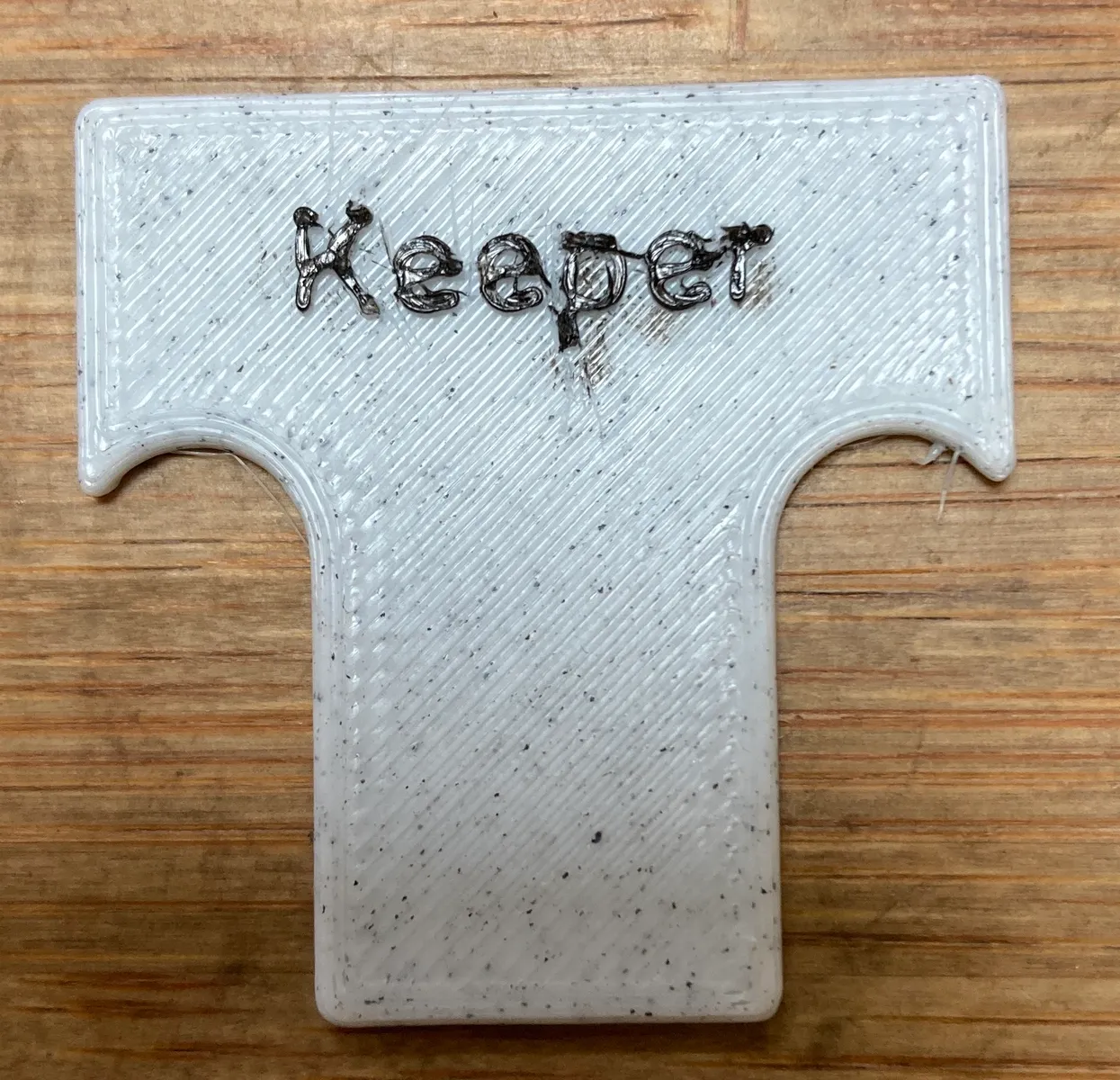
Logs
 Loading asset logs.
Loading asset logs.
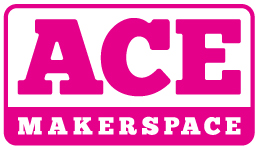
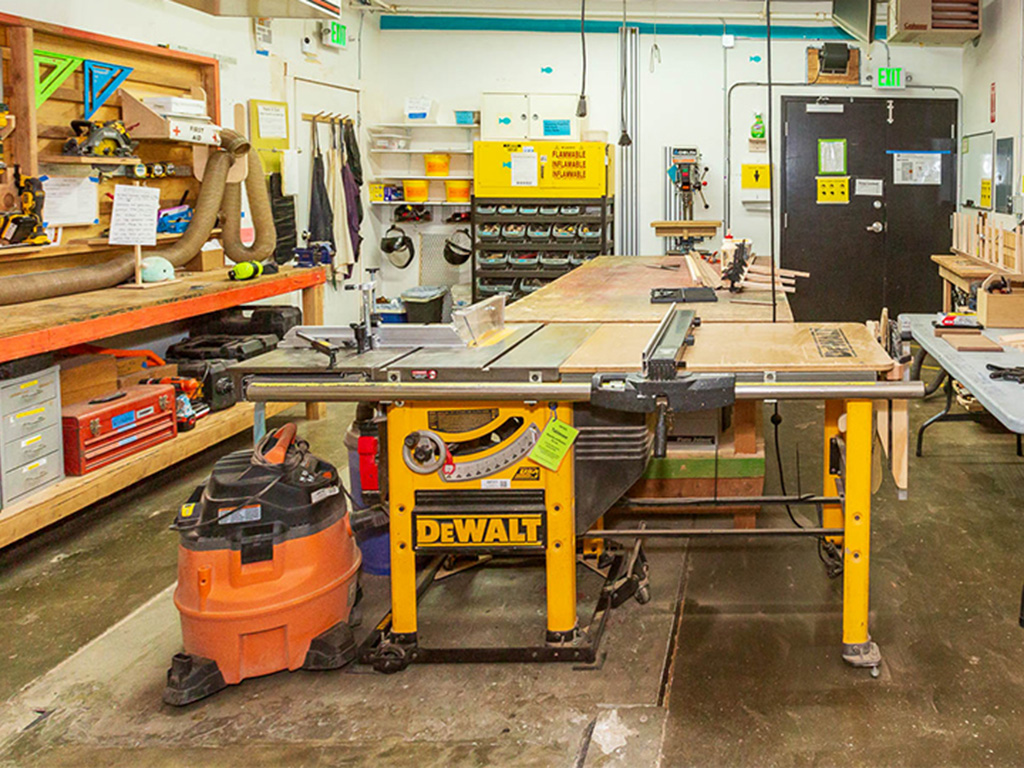
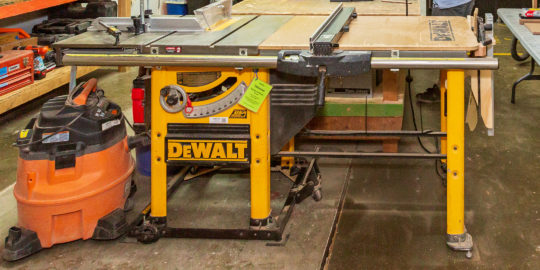
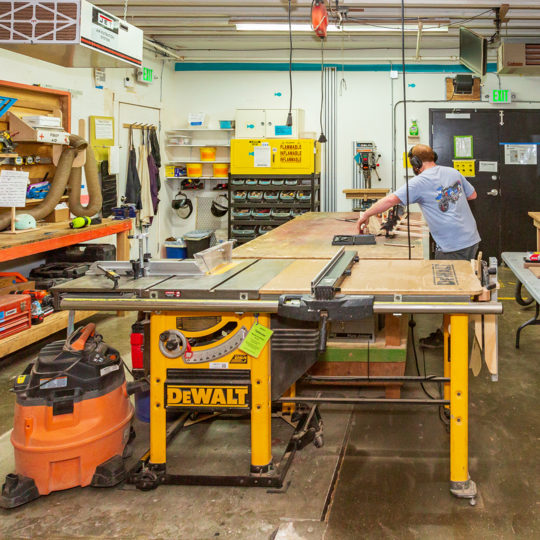
Blade for table saw is extremely dull. Will still cut small thickness boards but anything that is thick will be difficult if not dangerous.
Edit: I was pressing on the left side and was binding the blade. User error.